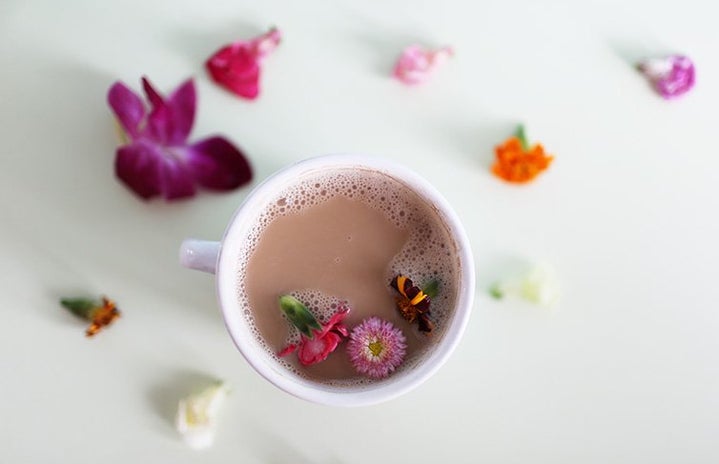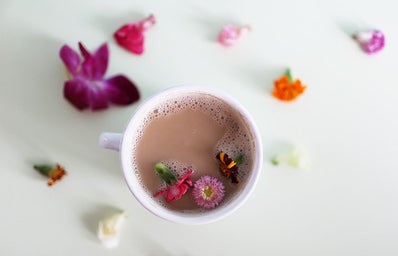The word Ayahuasca has indigenous origins. “Aya” means “dead person, soul, spirit,” and “waska” means “rope, vine, liana, or wine.” Therefore, the translation to Portuguese would be something like “rope of the dead” or “wine of the dead.”
Ayahuasca tea is made by infusing the Banisteriopsis caapi vine and the leaves of the Psychotria viridis shrub. Initially used exclusively by Indigenous peoples, it spread to civilizations and villages in the Western Amazon.
In the early 20th century, except for alcohol, the use of psychoactive substances in Western society was almost non-existent. Although the tradition of the beverage is common to many tribes across much of South America, only in Brazil did non-indigenous religions develop that use of Ayahuasca. These religions blended ancient traditions with influences from Christianity, Kardecist Spiritism, and Afro-Brazilian religions.
The legal use of Ayahuasca in religious rituals in Brazil represented freedom of worship and led to a significant increase in the number of followers.
For indigenous civilizations, religious practices are intrinsically linked to nature, which is seen as a spiritual entity with a soul and will. This connection shows that humans are immersed in nature, recognizing it as an element of their culture and spirituality. Ayahuasca, a sacred tea, is fundamental in this context as it induces altered states of consciousness, allowing the perception of spirits inhabiting plants and animals, and reinforcing the idea that all beings are equal and interconnected. The use of tea is crucial for understanding the spiritual realm and is considered essential for the indigenous person’s fate after death.
Among the Ashaninka, Ayahuasca is seen as a symbol of religious and moral virtue, and its visions are regarded as absolute truths that reveal the essence of beings. The plant is considered the source of knowledge necessary for a righteous life in all aspects, from personal to spiritual. Besides its ceremonial role, Ayahuasca is recognized for its therapeutic properties, serving as means for diagnosing and curing ailments. Thus, for these tribes, the tea facilitates an understanding of nature and life and establishes social identity and community autonomy.
THE CONTEMPORARY USE OF AYAHUASCA
Santo Daime, a syncretic religion, was founded by Raimundo Irineu Serra in Rio Branco (AC), and it uses Ayahuasca, composed of the vine and the leaf, symbolizing the union of masculine and feminine elements. The word “Daime” is a request for strength and light, reflecting the spiritual quest of its practitioners. The rituals called “works,” involve physical and spiritual techniques aimed at adapting neophytes to the principles of the religion, emphasizing values such as obedience, humility, and love for others.
Santo Daime practices include various techniques adapted for different ages and genders, establishing identity and social position within the group. Examples include the use of tea by pregnant women to ease childbirth and the introduction of Daime in newborns’ lives, promoting a continuous connection with the beverage. The tea preparation ritual takes place on the last new moon of the month, involving the cleansing and infusion of the plants, accompanied by chants, creating an environment conducive to spirituality.
Santo Daime practitioners also recognize the therapeutic effects of the drink, which is seen as a means for ethical transformation and healing. The understanding of illness is often integrated with Christian notions, such as repentance and forgiveness, reflecting a syncretic approach that combines Kardecist and Christian elements. This fusion of beliefs and practices provides users with a holistic perspective on health and spirituality.
Business student Daniel Ortolan reveals that his first contact with Ayahuasca was through his family, who use it every two weeks. “In my first ceremony, I just accepted what was happening and tried to open myself as much as possible to the experience, staying relaxed. What deeply marked me and comforted me at that moment was that my brother, who I hadn’t had contact with for more than a year, was there with me.” The student shares that his experience was beneficial: “I believe it’s a healing tool. After my first time, I started paying more attention to the things I do and their consequences. I also reconnected more with my family”.
RISKS AND BENEFITS OF AYAHUASCA TEA
Ayahuasca can cause varied effects. Many users report intense visions, dream-like experiences, and a heightened sense of alertness. However, there are also risks: some people may experience hypertension, palpitations, nausea, and vomiting. These side effects are linked to how the substance interacts with the body, especially serotonin receptors. In more severe cases, Ayahuasca can even lead to serotonin syndrome, a dangerous condition.
The altered states of consciousness induced by Ayahuasca can be described as a reduction in habitual perception, similar to vivid dreams. Four main characteristics often mark these moments: they are hard to explain (ineffability), bring profound revelations (noetic quality), do not last long (transience), and can make a person feel guided by a higher force (passivity). While these states can be fascinating, it’s important to be cautious due to the risks involved.
Despite the adverse effects, many users claim that Ayahuasca offers therapeutic benefits, such as self-awareness and emotional relief. As a result, its use is common in religious and therapeutic contexts, where it is viewed as a tool for personal transformation. However, this practice must be supervised by experienced professionals, as reactions can vary greatly from person to person.
REFERENCES
COSTA, Carolina Maria. Ayahuasca: uma abordagem toxicológica do uso ritualístico. Available at: https://doi.org/10.1590/S0101-60832005000600001
REIS, Manuel. Ayahuasca: o que é, efeitos no corpo, possíveis benefícios (e riscos). Available at: https://www.tuasaude.com/ayahuasca/
—————————————————————–
The article above was edited by Clarissa Palácio.
Did you like this type of content? Check Her Campus Cásper Líbero’s home page for more!


